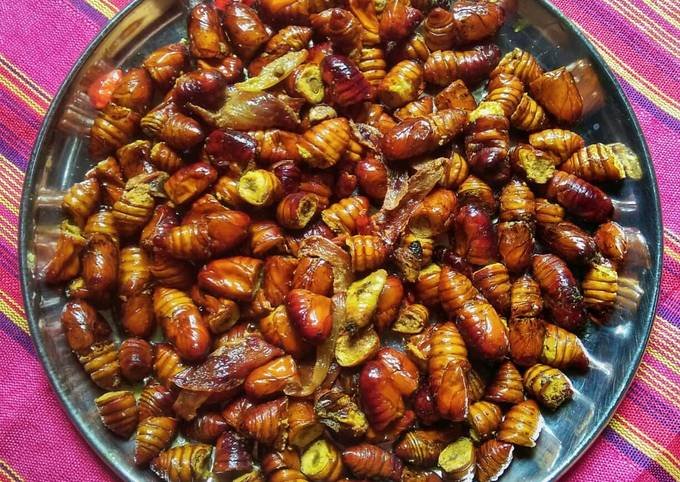Among the rich and diverse culinary heritage of Northeast India, one traditional dish stands out both for its uniqueness and its deep cultural roots—the Silkworm Dish. Often seen as exotic or unusual by outsiders, this dish is a beloved delicacy in states like Assam, Nagaland, and Manipur. For locals, it’s more than just food—it’s a reflection of tradition, resourcefulness, and community.
The Cultural Significance of the Silkworm Dish
In regions of Assam where sericulture (silk farming) is practiced, silkworm pupae have long been used as food. Traditionally, once the silk is harvested, the leftover pupae are cooked and consumed. This practice reflects the philosophy of zero waste and sustainable living, deeply embedded in local lifestyles.
Tribes such as the Bodo, Mishing, and Karbi communities have long included the silkworm dish in their culinary traditions. It is often served during festivals, family gatherings, and even offered to special guests as a symbol of honor.
How the Silkworm Dish Is Prepared
The most common method of preparing the silkworm dish involves sautéing or frying the silkworm pupae with spices, herbs, and mustard oil. The pupae have a soft, chewy texture and absorb flavors quickly, making them ideal for savory dishes.
Typical Ingredients:
- Boiled or steamed silkworm pupae
- Mustard oil
- Garlic and ginger paste
- Onions
- Green chilies
- Salt and turmeric
- Bamboo shoots (optional)

The pupae are stir-fried until slightly crispy on the outside while maintaining their soft interior. Some variations include boiling them in tangy sauces or incorporating them into curries with local herbs and vegetables.
Nutritional Value and Health Benefits
The silkworm dish is not just a cultural delicacy—it’s also incredibly nutritious. Rich in protein, iron, and essential amino acids, silkworm pupae are considered a superfood by many nutritionists. They are low in fat and contain omega-3 fatty acids, making them a healthy alternative to conventional meats.
In many tribal communities, the dish is believed to strengthen the immune system and improve energy levels. Some even consider it medicinal, using it in traditional remedies.
Modern Revival and Global Attention
As the world becomes more conscious of sustainable food sources, the silkworm dish is gaining renewed interest—not just in India but internationally. Chefs experimenting with edible insects are including silkworms in fine dining menus, pairing them with modern sauces and gourmet presentations.
In Guwahati and other urban areas of Assam, restaurants have started offering silkworm dishes as part of ethnic cuisine menus, introducing curious tourists and foodies to the unique experience.
Food vloggers and content creators from across the country have also contributed to its growing popularity, showcasing their first reactions and appreciation for the earthy, nutty flavor of the dish.
Challenges and Cultural Sensitivity
Despite its nutritional and cultural value, the silkworm dish often faces social stigma, especially from those unfamiliar with insect-based cuisine. While some celebrate it as a brave culinary adventure, others hesitate to try it due to its appearance or preconceived notions.
It’s essential to approach such traditional dishes with respect and curiosity rather than judgment. For the communities that have preserved this dish for centuries, it represents sustainability, survival, and heritage.
The Future of the Silkworm Dish
With increased focus on climate-friendly diets and alternative protein sources, the future of the silkworm dish looks promising. More research is being done on the scalability of edible insects, and initiatives are underway to promote such dishes as viable food options.
In Assam and other parts of Northeast India, young chefs are taking pride in reviving and modernizing this traditional delicacy. Cooking competitions, cultural fests, and food expos now feature the silkworm dish front and center, helping it reach a broader audience.
Also Read: NASA-ISRO’s NISAR Project Reaches Milestone with the Arrival of Radar Antenna Reflector at Bengaluru












